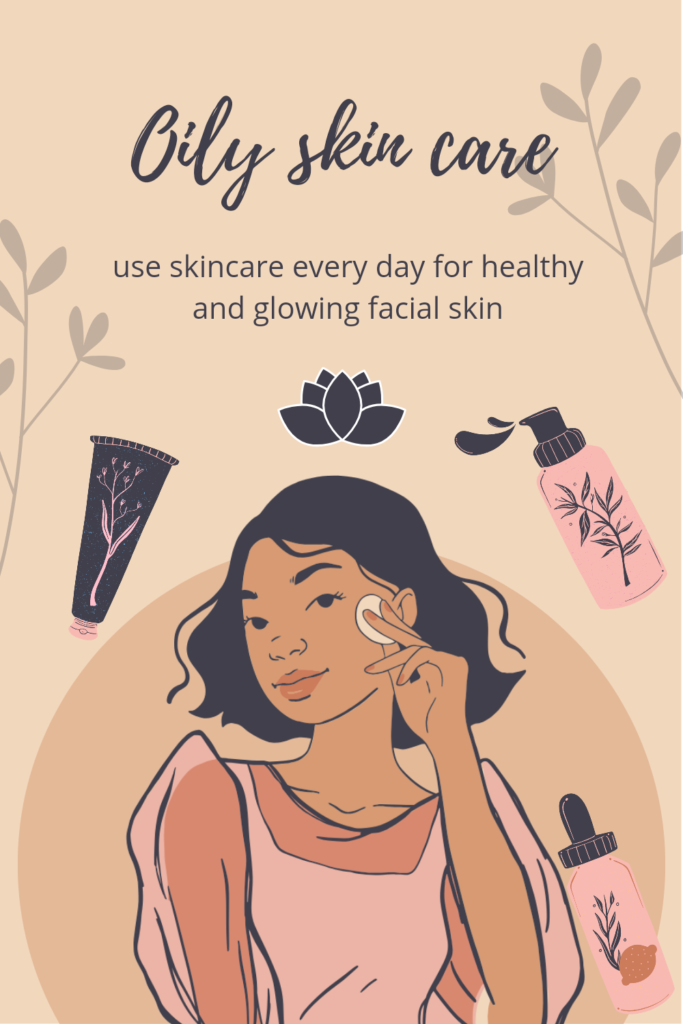Oily skin serums are lightweight, fast-absorbing formulations that can help control excess oil production, minimize pores, and provide hydration without clogging pores. Here is a simple DIY oily skin serum recipe along with instructions on how to use it:DIY Oily Skin Serum Recipe:Ingredients:- 1 tablespoon jojoba oil (regulates oil production)- 1 tablespoon grapeseed oil (lightweight and non-comedogenic)- 5 drops tea tree essential oil (anti-inflammatory and antibacterial)- 5 drops lavender essential oil (calming and soothing)Instructions:1. In a clean, dry glass bottle or dropper, combine jojoba oil and grapeseed oil.2. Add tea tree essential oil and lavender essential oil to the carrier oils.3. Close the bottle and shake well to mix all the ingredients thoroughly.4. Store the serum in a cool, dark place away from direct sunlight.How to Use Oily Skin Serum:1. Cleanse your face with a gentle cleanser suitable for oily skin and pat dry.2. Apply a few drops of the oily skin serum to your fingertips.3. Gently massage the serum onto your face using upward motions, avoiding the eye area.4. Allow the serum to absorb into your skin for a few minutes before applying any additional skincare products or makeup.5. Use the oily skin serum once or twice daily, preferably in the morning and evening, as part of your skincare routine.Note: Always perform a patch test before using any new skincare product, especially if you have sensitive skin or allergies. If you experience any irritation or discomfort, discontinue use immediately.In addition to using an oily skin serum, remember to maintain a consistent skincare routine tailored to your skin type and concerns. It’s essential to cleanse, tone, moisturize, and protect your skin from sun damage regularly to keep it healthy and balanced. If you have specific concerns about your oily skin, consider consulting a dermatologist for personalized recommendations and advice.

Certainly! In addition to using a DIY oily skin serum, there are other steps you can incorporate into your skincare routine to help manage oily skin effectively:1. Cleanse Twice Daily: Cleansing is crucial for oily skin to remove excess oil, dirt, and impurities that can clog pores and lead to breakouts. Use a gentle, non-comedogenic cleanser specifically formulated for oily skin. Avoid harsh cleansers that strip the skin of its natural oils, as this can trigger more oil production.2. Exfoliate Regularly: Exfoliation helps to unclog pores, remove dead skin cells, and improve skin texture. Opt for chemical exfoliants like salicylic acid or glycolic acid, which can penetrate into the pores and help regulate oil production. However, be cautious not to over-exfoliate, as this can irritate the skin and exacerbate oiliness.3. Use a Lightweight Moisturizer: Contrary to popular belief, oily skin still needs hydration. Look for oil-free, non-comedogenic moisturizers that provide hydration without adding excess oil to the skin. Hyaluronic acid-based moisturizers are a great option for oily skin as they are lightweight and hydrating.4. Apply Sunscreen Daily: Sun protection is essential for all skin types, including oily skin. Choose a non-comedogenic, oil-free sunscreen with at least SPF 30 to protect your skin from harmful UV rays. Look for mattifying sunscreens that can help control shine throughout the day.5. Incorporate Oil-Control Products: Consider using products specifically designed to control oil production, such as mattifying primers, setting powders, or blotting papers. These products can help absorb excess oil and keep your skin looking matte and fresh throughout the day.6. Maintain a Healthy Diet: A balanced diet rich in fruits, vegetables, whole grains, and lean proteins can help support overall skin health. Avoiding greasy, fried foods and sugary snacks may also help reduce excess oil production in the skin.7. Stay Hydrated: Drinking an adequate amount of water is essential for maintaining healthy skin. Proper hydration can help regulate oil production and keep your skin looking plump and radiant.Remember that consistency is key when it comes to managing oily skin. It may take some time to find the right combination of products that work best for your skin, so be patient and give your skincare routine time to show results. If you have persistent concerns about your oily skin, consider seeking advice from a dermatologist for personalized recommendations and treatment options.